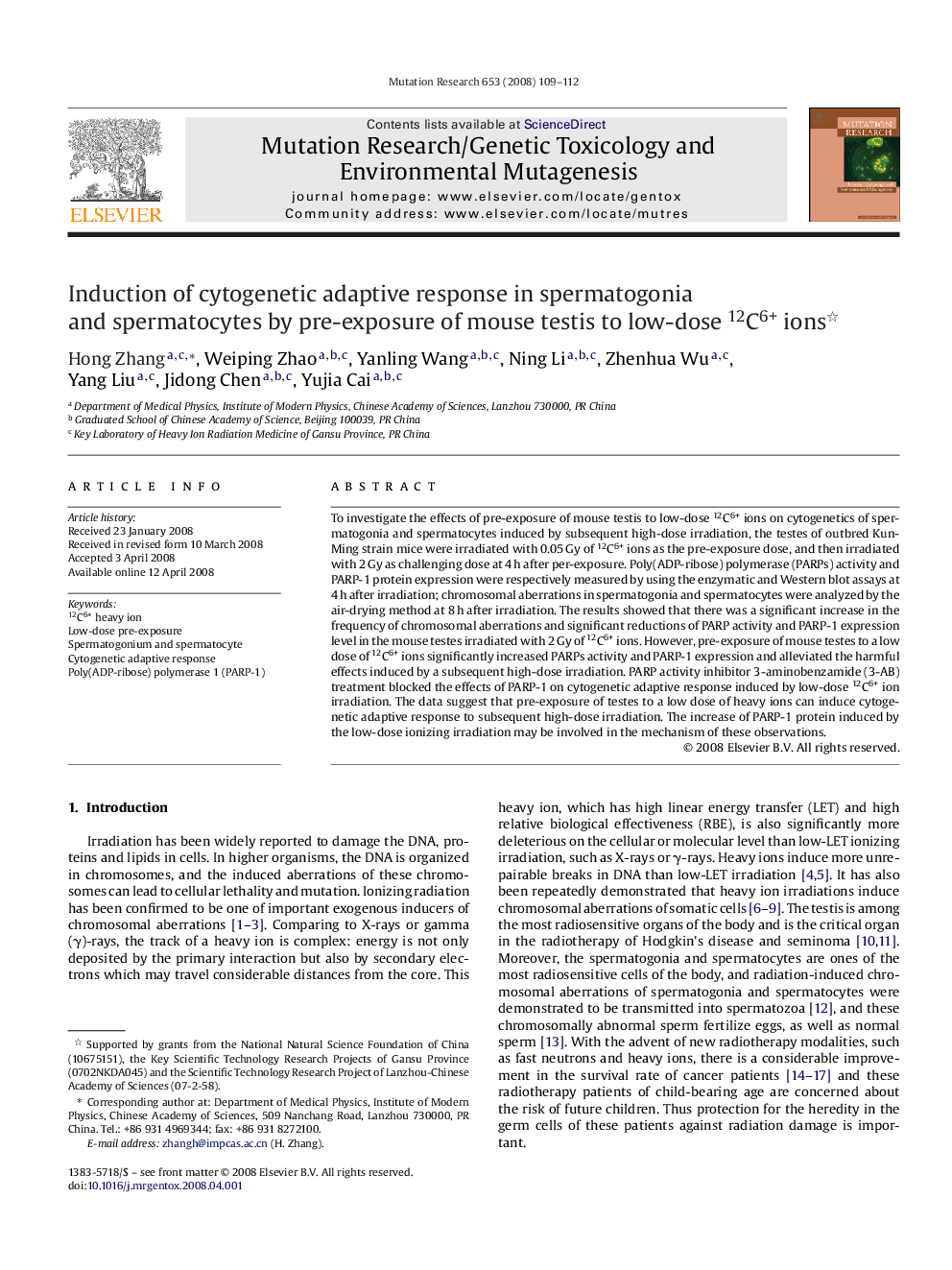| کد مقاله | کد نشریه | سال انتشار | مقاله انگلیسی | نسخه تمام متن |
|---|---|---|---|---|
| 2148871 | 1548634 | 2008 | 4 صفحه PDF | دانلود رایگان |

To investigate the effects of pre-exposure of mouse testis to low-dose 12C6+ ions on cytogenetics of spermatogonia and spermatocytes induced by subsequent high-dose irradiation, the testes of outbred Kun-Ming strain mice were irradiated with 0.05 Gy of 12C6+ ions as the pre-exposure dose, and then irradiated with 2 Gy as challenging dose at 4 h after per-exposure. Poly(ADP-ribose) polymerase (PARPs) activity and PARP-1 protein expression were respectively measured by using the enzymatic and Western blot assays at 4 h after irradiation; chromosomal aberrations in spermatogonia and spermatocytes were analyzed by the air-drying method at 8 h after irradiation. The results showed that there was a significant increase in the frequency of chromosomal aberrations and significant reductions of PARP activity and PARP-1 expression level in the mouse testes irradiated with 2 Gy of 12C6+ ions. However, pre-exposure of mouse testes to a low dose of 12C6+ ions significantly increased PARPs activity and PARP-1 expression and alleviated the harmful effects induced by a subsequent high-dose irradiation. PARP activity inhibitor 3-aminobenzamide (3-AB) treatment blocked the effects of PARP-1 on cytogenetic adaptive response induced by low-dose 12C6+ ion irradiation. The data suggest that pre-exposure of testes to a low dose of heavy ions can induce cytogenetic adaptive response to subsequent high-dose irradiation. The increase of PARP-1 protein induced by the low-dose ionizing irradiation may be involved in the mechanism of these observations.
Journal: Mutation Research/Genetic Toxicology and Environmental Mutagenesis - Volume 653, Issues 1–2, 31 May 2008, Pages 109–112